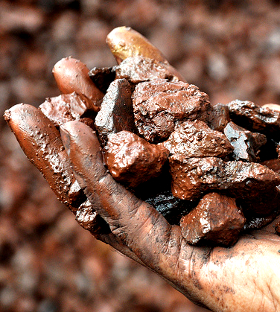New date for ancient iron
 Researchers have dated Earth’s largest iron ore deposits in WA.
Researchers have dated Earth’s largest iron ore deposits in WA.
A new study from Curtin University has revealed that the Earth's largest iron ore deposits, located in the Hamersley Province of Western Australia, are approximately one billion years younger than previously thought.
The discovery has the potential to greatly improve future exploration efforts for the resource.
Using a novel geochronology technique, researchers accurately measured the age of iron oxide minerals, determining that the Hamersley deposits formed between 1.4 and 1.1 billion years ago.
Previous estimates had dated these formations at about 2.2 billion years old.
They were formed during a period of major geological activity when ancient supercontinents were breaking apart and new ones were forming.
“The energy from this epic geological activity likely triggered the production of billions of tonnes of iron-rich rock across the Pilbara,” says Dr Liam Courtney-Davies, the study's lead author.
“The discovery of a link between these giant iron ore deposits and changes in supercontinent cycles enhances our understanding of ancient geological processes and improves our ability to predict where we should explore in the future.”
Associate Professor Martin Danišík, a co-author of the study from the John de Laeter Centre, says the research precisely dated minerals from banded iron formations (BIFs).
These formations are ancient underwater layers of iron-rich rock that offer deep insights into Earth's geologic past.
“Until now, the exact timeline of these formations changing from 30 per cent iron as they originally were, to more than 60 per cent iron as they are today, was unclear, which has hindered our understanding of the processes that led to the formation of the world’s largest ore deposits,” said Associate Professor Danišík.
The team used a new technique that dates iron oxide minerals through uranium and lead isotope analysis within the mineral grains.
“Our research indicates these deposits formed in conjunction with major tectonic events, highlighting the dynamic nature of our planet’s history and the complexity of iron ore mineralisation,” Associate Professor Danišík commented.
Western Australia is the world’s leading producer of iron ore, with iron ore being Australia's largest export earner, amounting to $131 billion in the last financial year.
The implications of this research are significant for the mining industry, suggesting new avenues for exploration based on the revised timeline of ore formation.








 Print
Print